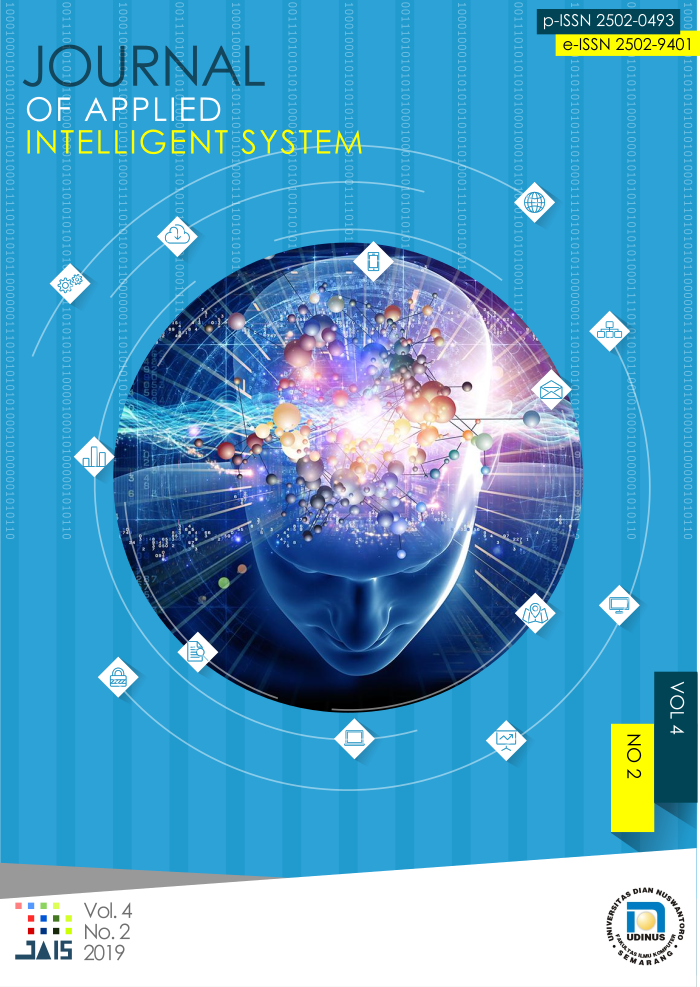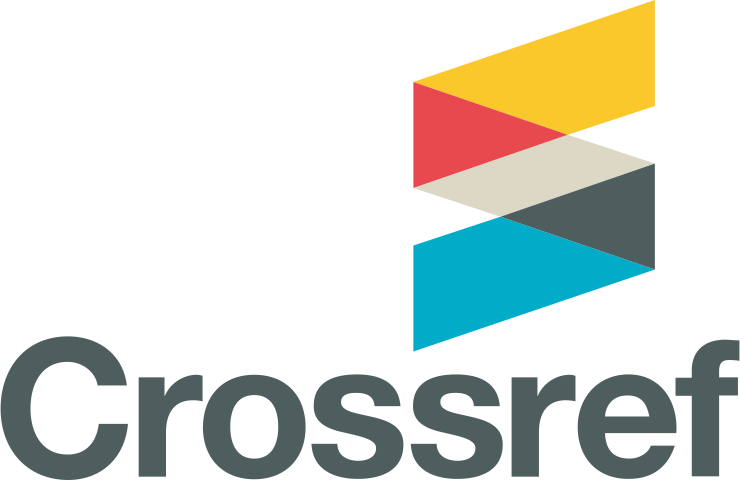Rabbit Type Classification Using Multi-SVM Based on Feature Extraction
DOI:
https://doi.org/10.33633/jais.v4i2.3381Abstract
Rabbits reputation of being cute, fluffy, cuddly critters lend then to being a popular choice for children pets. But in raising a rabbit is not easy, this depends on the type of rabbit. Rabbits that commonly pet are Rex Rabbits, American Rabbits, and Giant Rabbits. Rex Rabbits itself has some species including Rex Amber and Rex Lilac species, Giant Rabbits rabbits includes Giant Chekered rabbit, Harleyquin, dan American White Rabbit. Classification technology can be used to help the classification process of rabbits are Multi-SVM method and image feature extraction to classify rabbit species. Feature extraction used in this study is mean, variance, skewness, kurtosis, entropy. The five features are classified with Multi-SVM. The data used in this study are 125 images, consisting of 100 training images and 25 test images. The accuracy of this method reached 92%. Keywords – Classification, Multi-SVM, Rabbit, Feature ExtractionReferences
J. Cervantes, F. G. Lamont, A. López-Chau, L. R. Mazahua dan J. S. RuÃz, “Data selection based on decision tree for SVM classiï¬cation on largedata sets,†Applied Soft Computing, p. 787–798, 2015.
B. Baum dan M. Hewicker-Trautwein, “Classification and Epidemiology of Mammary Tumours in Pet Rabbits (Oryctolagus cuniculus),†Journal of Comparative Pathology, pp. 291-298, 2015.
X. Zeng, W. Ouyang, B. Yang, J. Yan dan X. Wang, “Gated Bi-directional CNN for Object Detection,†dalam European Conference on Computer Vision, The Netherlands, Springer, 2016, pp. 354-369.
S. A. Medjahed , “A comparative study of feature extraction methods in images classification,†I.J. Image, Graphics and Signal Processing, pp. 16-23, 2016.
M. Manohar, S. Kumar, H. Kumar dan R. Rani, “Deep Learning Approach for Classification of Animal Videos,†dalam Data Analytics and Learning, Springer, 2018, pp. 421-431.
I. M. Revina dan W. S. Emmanuel, “A Survey on Human Face Expression Recognition Techniques,†Journal of King Saud University - Computer and Information Sciences, pp. 1-9, 2018.
X. Wang dan L. Chen, “An effective histogram modification scheme for image contrast enhancement,†Signal Processing: Image Communication, pp. 187-198, 2017.
S. Bahrampour, A. Ray, S. Sarkar, T. Damarla dan N. M. Nasrabadi, “Performance comparison of feature extraction algorithms for target detection and classification,†Pattern Recognition Letters, pp. 2126-2134, 2013.
S. Kumar dan S. K. Singh, “Monitoring of pet animal in smart cities using animal biometrics,†Future Generation Computer Systems, pp. 553-563, 2018.
K. Srunitha dan S. Padmavathi, “Performance of SVM classifier for image based soil classification,†2016 International Conference on Signal Processing, Communication, Power and Embedded System (SCOPES), 2016.
F. Liantoni, R. I. Perwira, L. D. Putri, R. T. Manurung, M. S. Kahar, J. Safitri, L. T. Muharlisiani, D. Chamidah, A. Ghofur dan P. S. Kurniawan, “Watermelon classification using k-nearest neighbours based on first order statistics extraction,†Journal of Physics: Conference Series, pp. 1-6, 2019.
I. Usta dan Y. M. Kantar, “Mean-Variance-Skewness-Entropy Measures: A Multi-Objective Approach for Portfolio Selection,†Entropy, pp. 117-133, 2011.
Downloads
Published
Issue
Section
License
- Authors retain copyright and grant the journal right of first publication with the work simultaneously licensed under a Creative Commons Attribution License that allows others to share the work with an acknowledgment of the work's authorship and initial publication in this journal.
- Authors are able to enter into separate, additional contractual arrangements for the non-exclusive distribution of the journal's published version of the work (e.g., post it to an institutional repository or publish it in a book), with an acknowledgment of its initial publication in this journal.
- Authors are permitted and encouraged to post their work online (e.g., in institutional repositories or on their website) prior to and during the submission process, as it can lead to productive exchanges, as well as earlier and greater citation of published work (See The Effect of Open Access).









